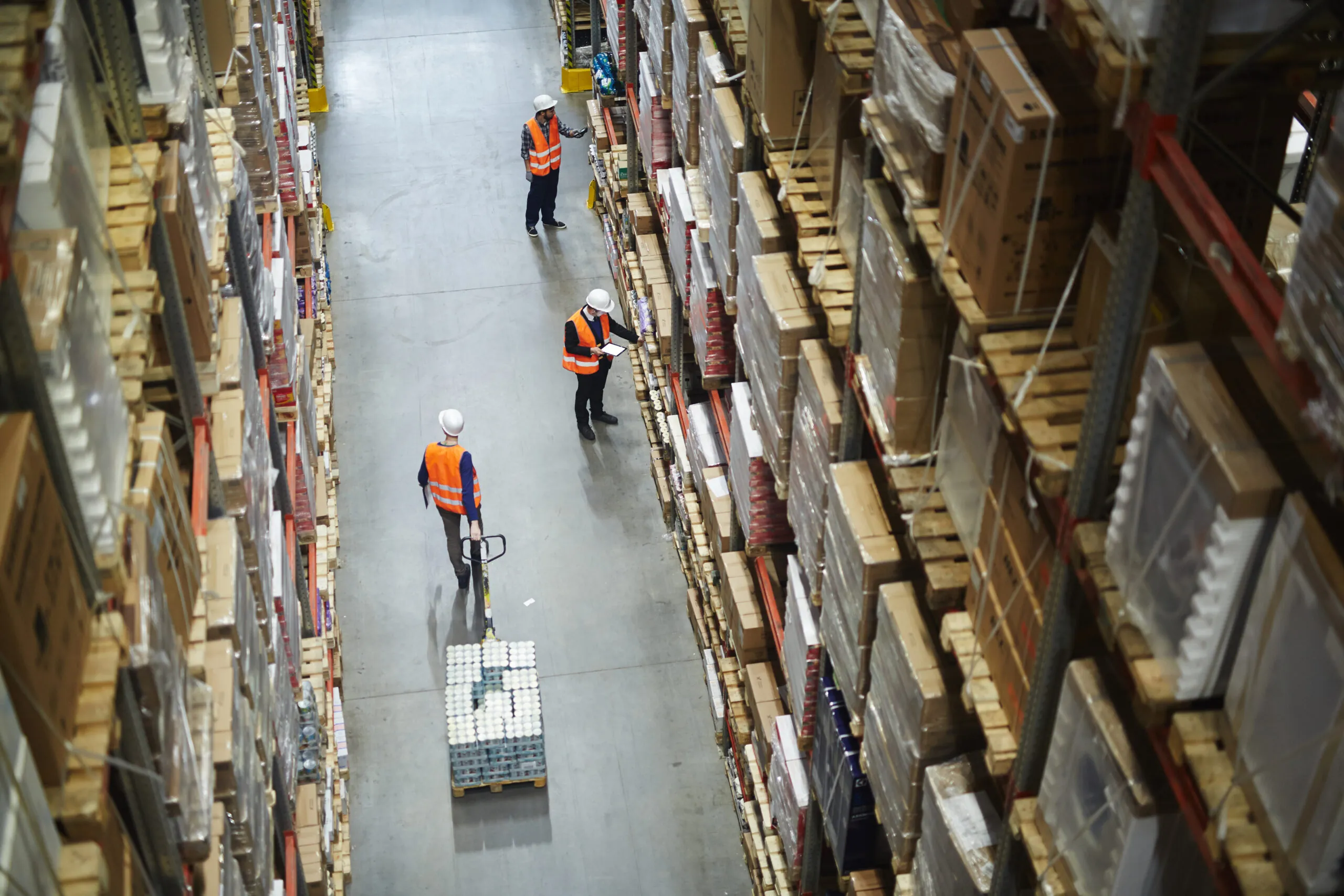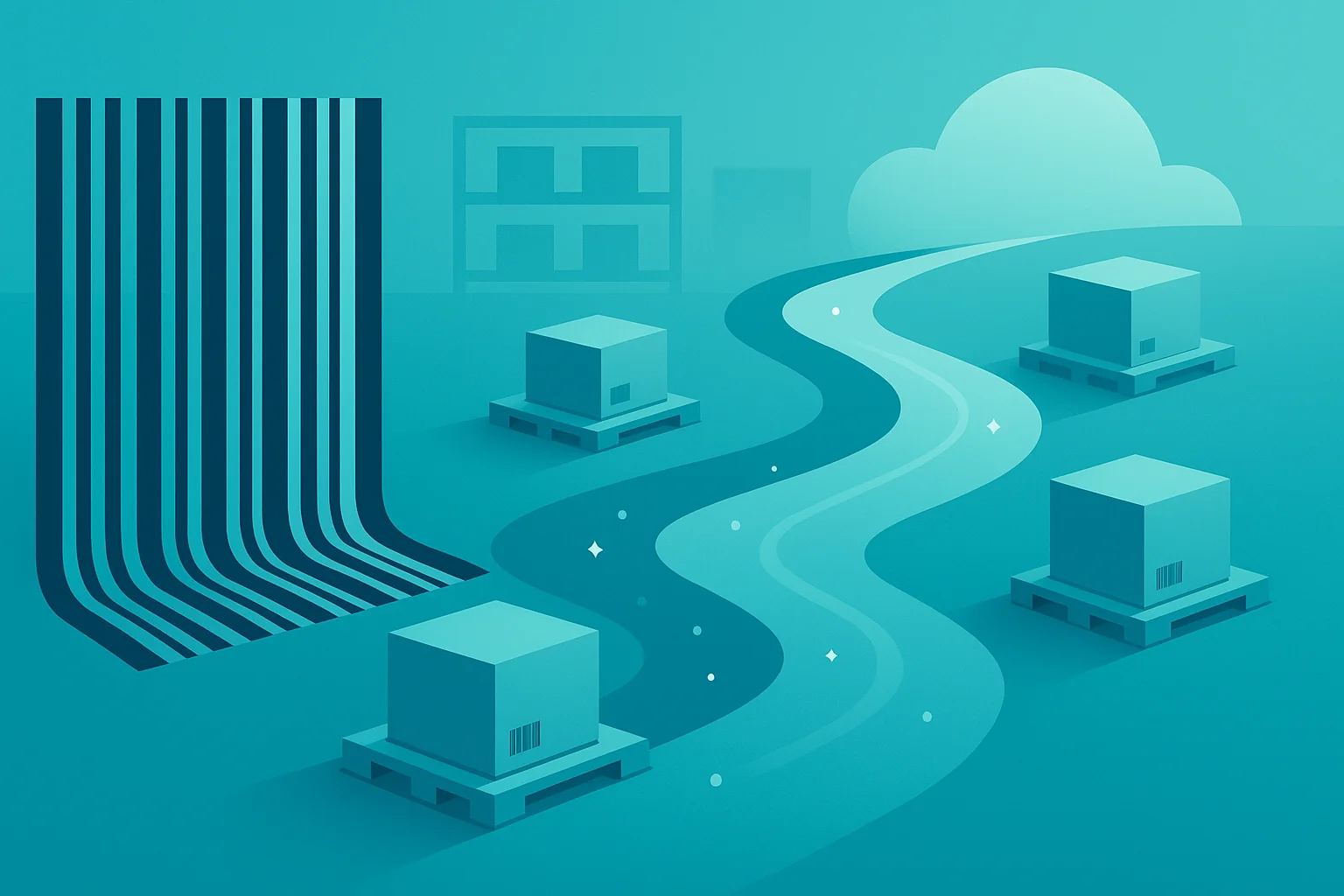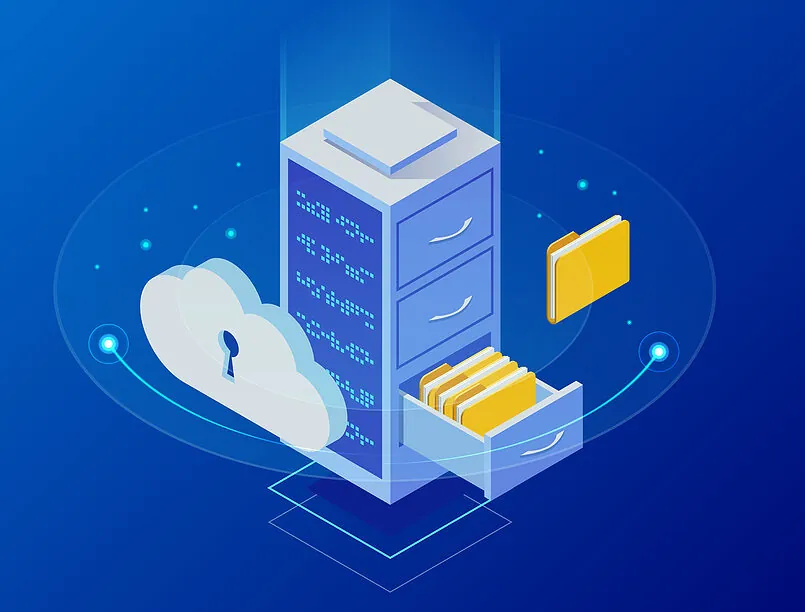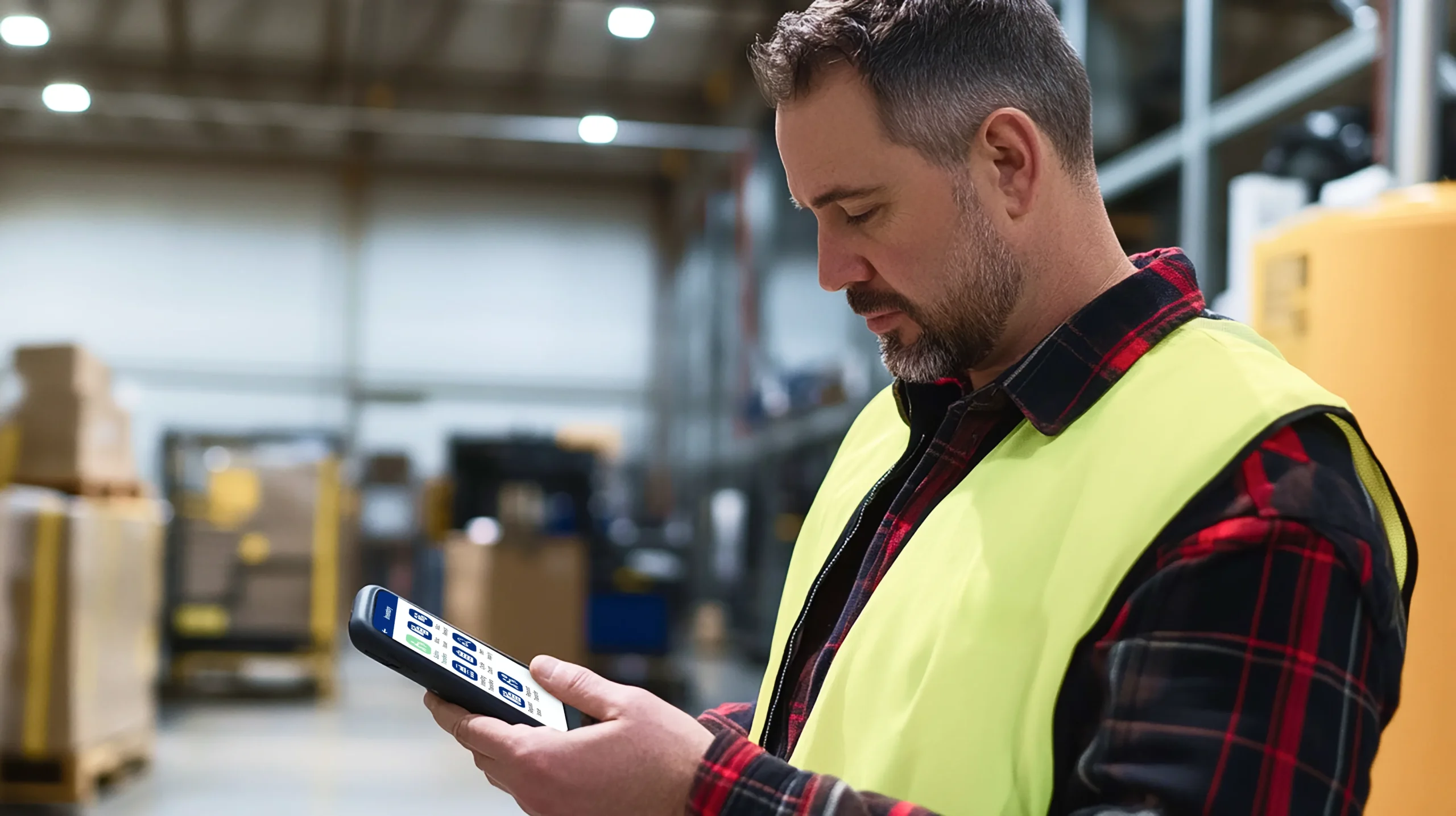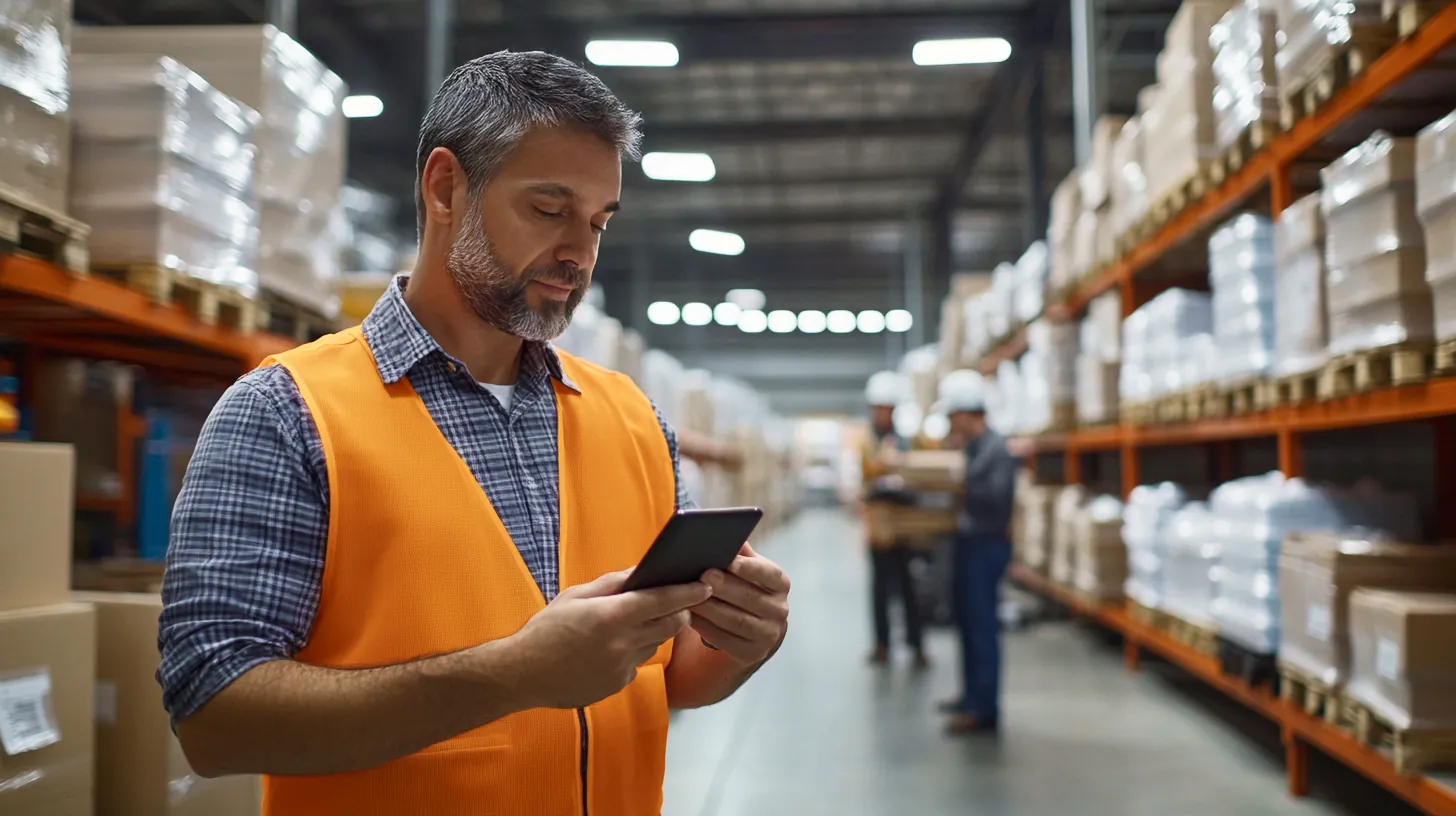
Why Supply Chain AI Tech Needs Mobile Data to Take Off: Q&A with Saumya Saxena
AI is a powerful tool for modern supply chains, but it cannot operate effectively without a steady stream of high-quality, real-time data. Mobile barcoding provides that critical foundation, serving as the bridge between physical operations and digital intelligence. When combined, mobile data capture and AI create a feedback loop that accelerates decision-making, reduces costs, and strengthens resilience.
We sat down with Saumya Saxena, Manager, Solutions Architect Services at RFgen to get her take. She explains how these two technologies work together, what benefits companies are seeing, and how organizations can get started.
Q: Saumya, why is mobile barcoding essential for AI in supply chains?
Saumya: AI in supply chain operations depends on fast, accurate, and consistent data to make effective decisions. Mobile barcoding ensures that data from warehouse operations, such as receiving, picking, and shipping, is captured instantly and accurately. This removes the need for manual data entry, reduces errors, and provides real-time visibility into operations. Without this foundation of clean, real-time data, AI insights are delayed or unreliable.
Mobile barcoding becomes even more critical when considering the complexity of modern supply chains. Organizations today face global sourcing, geopolitical instability, and high customer expectations. Customers expect fast, transparent, and customized experiences. To meet these demands, supply chains must become smarter and more responsive. Mobile data is the sensory system that tells AI what is happening in the field—without it, the AI lacks the visibility needed to act.
Q: What are the main benefits of mobile data capture?
Saumya: Mobile data capture offers a suite of benefits:
- Real-time recording of transactions without time lags
- Accurate data collection through scanning instead of manual entry
- Improved inventory visibility across the supply chain
- Higher data integrity and traceability for compliance and audits
- Better support for hybrid work environments and remote supervision
- Reduction in paper use and manual clerical labor
Q: How do AI agents enhance supply chain performance?
Saumya: AI agents streamline supply chain operations by automating planning and forecasting tasks that traditionally require hours of human analysis. They process large datasets to identify patterns and predict needs, then act on them.
Key AI applications include:
- Forecasting demand using internal and external data sources
- Recommending optimized procurement and replenishment plans
- Monitoring equipment to predict maintenance needs
- Detecting shipment delays or disruptions in real time
AI agents provide predictive intelligence and automation that improve decision-making and reduce the need for manual oversight. For instance, Oracle’s AI tools can track demand signals and adjust forecasts continuously, helping organizations better match supply with demand. In manufacturing, predictive maintenance driven by AI can prevent unplanned downtime and optimize machine usage.
Q: How do mobile barcoding and AI work together in practice?
Saumya: Mobile devices collect operational data at the source, which feeds into AI models that analyze the information and provide guidance or trigger actions. This creates a continuous loop of observation, analysis, and execution. For example, if a picking area runs low on inventory, a barcode scan can update the system instantly. The AI agent can then create a replenishment task or alert a warehouse worker.
I like to describe this partnership as the “dynamic duo”—mobile barcoding as the agile sidekick and AI as the strategic mastermind. The mobile system captures events as they happen, and the AI responds in real time to guide, optimize, or automate the next steps. The result is a synchronized supply chain nervous system, where delays and disruptions are caught early and acted upon quickly.
Q: Can you share some real-world examples of companies benefiting from this combination?
Saumya: Absolutely. Companies across industries have implemented mobile data capture with AI-driven tools and reported strong results:
- TMEIC improved transaction speed by more than 90 percent
- Boyd Corporation gained real-time inventory control during an Oracle Cloud migration
- Blue Bell Creameries enhanced traceability and inventory accuracy
- Optovue met FDA tracking requirements while improving accuracy
These outcomes include faster workflows, higher data accuracy, and increased uptime. In the case of Boyd, RFgen’s mobile tools preserved legacy processes and helped streamline operations during a major ERP migration. For TMEIC, offline capabilities allowed them to continue scanning and collecting data even when Oracle was temporarily unavailable.
Q: What’s your advice for companies looking to get started?
Saumya: Begin by identifying where your supply chain is most dependent on manual processes. Target a pilot project using mobile barcoding to digitize transactions and integrate with your ERP system. From there, layer in AI tools to address forecasting, planning, or replenishment.Here are some recommended steps:
- Audit current data capture methods
- Choose a pilot location or process for mobile barcoding
- Integrate mobile data into your ERP
- Introduce AI capabilities once reliable data is flowing
- Track KPIs to measure performance gains
Q: What kinds of results can organizations expect?
Saumya: Organizations that combine mobile barcoding with AI consistently report:
- Reduced labor and inventory costs
- Increased speed and workflow efficiency
- Improved forecasting and decision-making
- Higher customer satisfaction
- More resilient operations during supply chain disruptions
These technologies are adaptable and scalable. Mobile apps can be tailored to different user roles and industries, from regulated pharmaceutical environments to heavy equipment manufacturers. As supply chains become more digital and more complex, this integration of mobile data and AI will be essential for remaining competitive.
